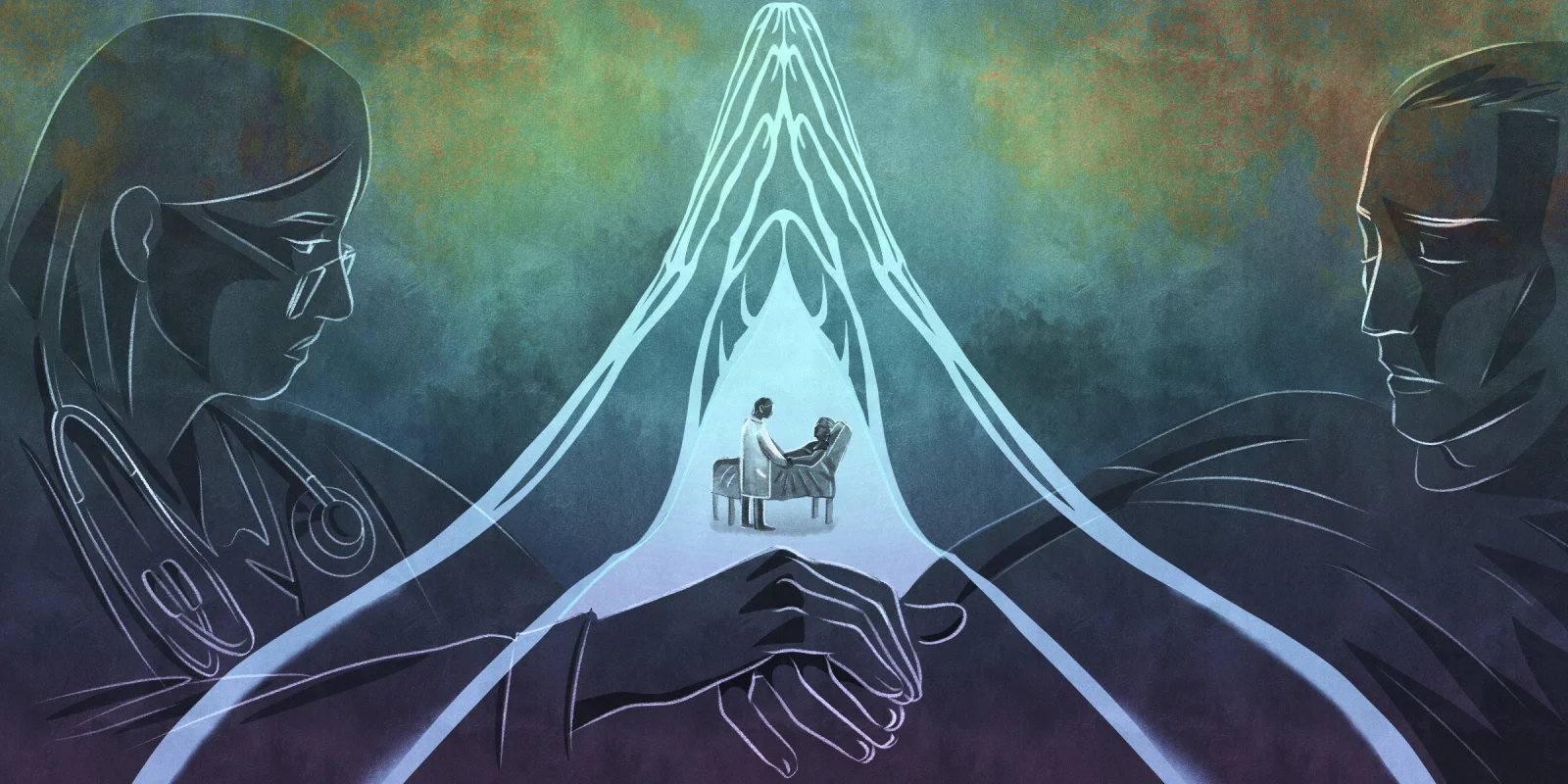I walked into the second-to-last patient’s room. I greeted him and asked how his night went. He patted my hand, as he usually did. His metastatic pancreatic cancer was causing him painful ascites as well as intractable hiccups, eructation, and esophageal reflux. He was also profoundly weak and was unable to walk anymore.
I asked how his conversation with the oncology team had gone the day before. The oncologist left a note in the patient’s chart stating they had talked at length with the patient and his family, explaining that the patient was only getting weaker, that the patient hadn’t been able to tolerate one cycle of chemotherapy, and that, given the patient’s clinical course, they were recommending hospice. This conversation was prompted by the fact that it was the patient’s third admission to the hospital in a matter of weeks. The patient had been discharged to a subacute rehab facility multiple times, with the hope of getting stronger to tolerate future chemotherapy. But each time, he was brought back to the hospital with uncontrollable symptoms and advancing cancer. The oncology team also documented in their note that the patient and his family still wanted to focus on getting stronger. My patient shrugged and told me that the conversation had gone well. He then asked me if there was any medicine he could drink so it could coat the cancer in his stomach, to help alleviate his burning and burping.
Aha, I thought, My patient clearly doesn’t understand the anatomy of his cancer. Perhaps if he understood it better, he would come to see that hospice is a very reasonable, and perhaps the only realistic, choice left for him. He would be more comfortable and be able to spend valuable time with his family, both of which he has said are very important to him.
I jumped into an impromptu anatomy lesson. I explained that the cancer was not actually in his stomach, but rather was growing from an organ just under his stomach. I pointed to the general areas on his stomach, trying to show how his stomach and pancreas were different entities.
He nodded, and then he asked the same question again. Fair enough; my hand gesturing and pointing were barely comprehensible even to me. I turned over my patient list to the blank side and drew a basic human body. I sketched out the gastrointestinal (GI) system, explaining as I went from mouth to esophagus to stomach to colon. I used the phrase “tube within a tube body plan” to describe the GI system, which is a phrase I never thought I’d use outside of medical school. I drew the pancreas and other abdominal organs, trying to illustrate how they work with the stomach, but that they are not actually located directly in the stomach.
“My cancer is not in my stomach?” my patient asked.
I thought about banging my head against the wall. Instead, I spotted some paper cups filled with water on my patient’s breakfast tray and decided to try a third route.
“This is your esophagus, stomach, intestines, and colon,” I said while holding up a straw. “And this is the rest of your abdomen,” I said, as I pointed inside of an empty cup.
I placed the straw inside the empty cup. I explained that it represented a healthy abdomen, with the space around the straw representing where the other organs, such as the pancreas, were located.
I poured water and a packet of sugar into the cup. I explained that this was his abdomen; the sugar granules swirling in the cup were the cancer, and the fluid was the ascites. I showed him that the straw, representing his GI tract, was still empty.
“But when will I be able to walk again?” he asked.
I paused.
“I think it’s unlikely that you will be able to walk as you did before getting cancer,” I said.
He shut his eyes. He then told me that during his conversation with the oncologists, they had brought up resuscitation status. He was still full code. He told me about a friend who was resuscitated after his heart had stopped. He then told me about his mother who died peacefully in his sleep, and that she had made the decision not to undergo resuscitation efforts.
“That was a good choice for my mom,” my patient said. “Because she was really sick anyway. I know I’m not there yet.”
I resisted the urge to tell him otherwise. Instead, I asked him what his conversations with his oncologist had been like prior to this admission. Had they discussed the disease course or his prognosis before?
“No, we haven’t talked about those things.”
I asked him if he wanted to know his prognosis.
“I don’t want to know that right now.”
And that’s when it hit me. I could provide the most detailed, thorough, specific description of my patient’s anatomy and cancer. I could use drawings and paper cup models to show how the cancer moved through his body and why it was causing all of his symptoms. But until he was ready to accept his diagnosis and prognosis, which at some deep subconscious level he seemed to already know, he would continue to make the same decisions.
I stood up from my crouch beside his bed. We talked about him likely being discharged later that day. I told him that he would be prescribed many anti-emetics and antacids. And when he expressed concern that he would have to come back again because of worsening, intractable symptoms, I promised that we would continue to meet him where he was at and provide the best care possible.
What important lessons have you learned from your patients? Share yours in the comment section.
Hailey Roumimper is an internal medicine resident in Washington, DC. She is a 2023–2024 Doximity Op-Med Fellow.
Illustration by April Brust






